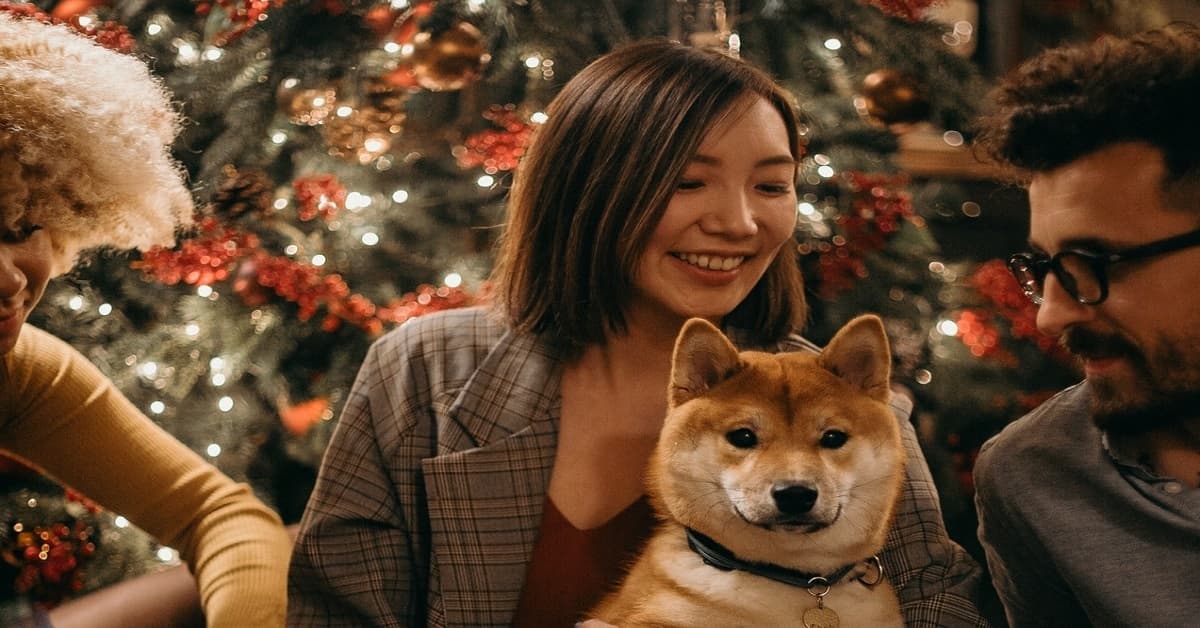If you are here, you likely have friends, family, or loved ones who dread visiting you because of the reaction they know they will get with your dog or dogs around. It is likely two things, firstly, your dog may be very aggressive and act in a threatening way around them snarling and growling or your dog is too friendly and gets very excited easily, jumping rapidly around and on top of your visitors anytime they come. This can be really uncomfortable for anyone and enough reason to avoid visiting you but the good news is that this behavior is something you can easily stop in your dog.
You need to understand from your dog’s perspective that someone coming to your house is like someone trying to join the pack even if it is a temporary situation. For your dog, this can be really confusing. Their natural tendency would be to meet this person and verify whether the person is an immediate threat or someone they already know and are comfortable around. The problem here is that this is not their decision to make, they are not the pack leader, you are. So the decision as to who should come into your house or not should be yours and not theirs no matter how confused they may be.
So what do you do? Well, you need to convey to your dog that it is very ok for this person or group of people to come into your house, more importantly, you should let him or her know how they are supposed to act whether your dog is the aggressive type or the happy type. Obviously, it is not everybody that is prone to liking dogs, not as we dog parents would love to believe.
.
.
Normally, if your visitor is already at your doorstep first thing is not to let your dog accompany you to the door. This is a way of telling him that you are well capable of handling the situation at the door no matter what it is.
There are situations where you would want your dog by your side e.g a group of strange-looking people knocking at your door or a known dangerous person at the door so for sure, feel free to take your dog to the door in such a moment. Otherwise, you can send your dog into the garden or into another room just before your visitors arrive. When the doorbell rings or you hear the knocking, and your dog starts to bark. Thank him for barking and then ignore and head for the door, this way your dog gets the acknowledgment he wants and gets to understand that you are in control of whatever the following outcome will be.
If you have left your dog in another room or in the garden, this will allow the dog to calm down a bit and give you enough time to explain to your visitors how to act if the dog comes in again. If your visitor is not staying for a long time e.g a delivery man or someone from the postal service, then there would be no need for any explanation.
Now if your dog continues to bark after your visitor has settled in, all you have to do is walk into the room or the garden or where ever you put your dog, totally ignore him, make no eye contact or talking with him, act as if you are taking something from the place or searching for something and then leave. This will help to reinforce the fact to the dog that he or she is not needed at the moment and that everything is under control.
Next thing is to aim at opening the room door or garden door after the dog has quietened down, this will help to reinforce the notion to the dog that the door only opens when he or she acts in a calm manner and keeps quiet.
The next step is to decide if you want your dog to join you and your visitors. If you are still concerned that your dog would get aggressive or too excited with the visitors around, the best thing would be to bring them out with a lead. If they try to jump on your visitor or act aggressively, simply take them back into the room or the garden and lock the door. This act simply means that if your dog wants to stay with the new pack (whether temporary or not) they have to be calm around them or they lose the privilege of staying with the pack. If you can get your visitors involved in the process, that would be cool. Let them in that they should ignore the dog totally, no eye contact, no talking to the dog or trying to pet at least in the beginning. This will go a long way to help an easily excited dog or aggressive dog to relax with the new pack. This part is tricky, especially for visitors that might be nervous around your dog or even excited, but if they understand that this will help the dog to act better around them, they are most likely to comply.
Things might not work out perfectly immediately, don’t fuss about it. The dog can always be sent back to the room with the doors locked but it is more likely that your dog would want to behave in a manner by which he or she can fit into the new pack.
Usually, for aggressive dogs, it is highly advised that you keep them close to you while introducing them to the guest. This way they get to know the new member of the pack and start adjusting themselves accordingly.
It is also advisable to keep an easily excited dog or an aggressive dog in a room or garden when you have visitors that might likely not comply with directions. This is very true for children especially. The main thing is to make your dog understand that their input is not needed when you have visitors in the house. With time and persistence, your dog will start to understand this and act accordingly.

Hi, I am Charles Nwankwo Editor-in-Chief, Mydoggything.com. Gleaning from Professional Dog Trainers, behaviorist, Registered Veterinarians, and Breeders. We are passionate about making dog care easy for you. My job is to make sure that you get the best-updated dog care information to understand and take care of your dog or dogs.
